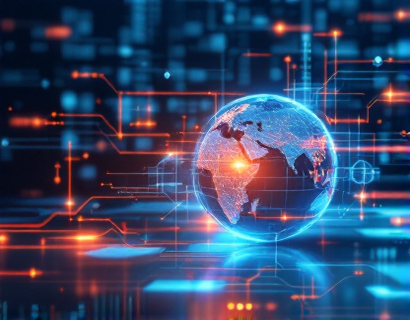Effortless Multilingual Document Translation: Revolutionizing Global Communication with Advanced AI Software
In an increasingly globalized world, the need for efficient and accurate multilingual document translation has become paramount. Businesses and individuals alike are constantly seeking solutions that can bridge language gaps, facilitate communication, and enhance collaboration across borders. Advanced AI-powered document translation software has emerged as a game-changer in this domain, offering a streamlined approach to converting text into multiple languages with precision and cultural sensitivity. This technology not only saves time and resources but also ensures that the nuances and context of the original content are preserved, making it an indispensable tool for modern communication.
The advent of AI-driven translation tools has transformed the landscape of document translation. Traditional methods often relied on human translators, which, while accurate, were time-consuming and costly. The integration of artificial intelligence has introduced a new level of efficiency and accuracy, making multilingual communication more accessible than ever. These advanced systems leverage machine learning algorithms to continuously improve their translation capabilities, adapting to various languages and dialects, and even understanding context and cultural nuances.
How AI Translation Software Works
At the core of AI translation software lies a complex system of natural language processing (NLP) and machine learning. NLP enables the software to understand and interpret human language, breaking it down into its fundamental components such as syntax, semantics, and context. Machine learning algorithms then analyze vast amounts of bilingual data to identify patterns and relationships between languages, allowing the software to generate accurate translations.
The process begins with the input of text in the source language. The AI system first performs pre-processing, which includes tokenization, where the text is broken down into individual words or tokens, and normalization, which standardizes the text to ensure consistency. Next, the system employs NLP to analyze the structure and meaning of the text, taking into account grammatical rules and contextual clues. This step is crucial for maintaining the original meaning and tone of the document.
Once the text is understood, the AI model generates a translation in the target language. This is not a straightforward word-by-word conversion but a sophisticated process that considers idiomatic expressions, colloquialisms, and cultural references. The software uses a combination of statistical models and neural networks to produce a fluent and natural-sounding translation. Post-processing then refines the output, ensuring that the translated text reads smoothly and accurately conveys the intended message.
Benefits of AI-Powered Document Translation
The advantages of using AI-powered translation software are numerous and significant. One of the most notable benefits is the dramatic reduction in translation time. Traditional methods can take days or even weeks to translate large documents, whereas AI can complete the task in a matter of minutes. This speed is particularly valuable for businesses that operate across multiple regions and need to respond quickly to global markets.
Accuracy is another critical aspect where AI translation software excels. While no system is perfect, the continuous learning and improvement of AI models have significantly reduced translation errors. The software can handle a wide range of languages and dialects, from commonly spoken languages like Spanish and Mandarin to less common ones like Swahili and Welsh. This versatility ensures that businesses and individuals can communicate effectively with a global audience without the risk of miscommunication.
Cultural sensitivity is another area where AI translation software shines. Traditional translation methods often fail to capture the nuances and cultural context of the source material, leading to translations that sound awkward or even offensive. AI systems, trained on diverse datasets, are better equipped to understand and preserve the cultural subtleties of the original text. This is particularly important for marketing materials, legal documents, and any content that requires a high degree of cultural awareness.
Enhancing Global Collaboration
The impact of AI-powered translation software on global collaboration cannot be overstated. In a business environment, the ability to quickly and accurately translate documents facilitates smoother communication between teams located in different parts of the world. This leads to more efficient project management, faster decision-making, and a more cohesive corporate culture. For instance, a multinational corporation can seamlessly share strategic plans, financial reports, and operational guidelines with its international branches, ensuring everyone is on the same page.
For individuals, the benefits are equally profound. Students, researchers, and professionals can access a wealth of information in their preferred language, breaking down barriers to knowledge and learning. Travelers can navigate foreign countries more easily, reading signs, menus, and other essential information without the need for constant translation services. The ease of access to multilingual content fosters a more interconnected and understanding global community.
Challenges and Limitations
Despite its many advantages, AI translation software is not without challenges. One of the primary limitations is the quality of translation in highly specialized or technical fields. While AI has made significant strides, it can still struggle with jargon, complex concepts, and domain-specific terminology. In such cases, human expertise is often necessary to ensure accuracy and precision.
Another challenge is the variability in language use, particularly in informal contexts such as social media or casual conversations. Slang, idioms, and regional dialects can be particularly difficult for AI to handle, as they often lack a direct equivalent in other languages. However, ongoing advancements in AI technology are gradually addressing these issues, improving the software's ability to handle a broader range of language use.
Future Trends in Translation Technology
The future of translation technology is promising, with several exciting developments on the horizon. One area of focus is the integration of multimodal translation, where the software can process and translate not just text but also images, videos, and audio. This capability will further enhance the user experience, making it possible to translate visual content in real-time, which is particularly useful for travelers and businesses operating in diverse environments.
Another trend is the personalization of translation services. AI systems are becoming more adept at learning individual preferences and adapting translations to suit specific styles or tones. This personalization can be especially valuable for brands that need to maintain a consistent voice across multiple languages and cultures.
Additionally, the convergence of translation technology with other AI applications, such as chatbots and virtual assistants, is set to revolutionize customer service and support. These integrated systems can provide instant, accurate translations in real-time, enhancing the user experience and expanding the reach of businesses globally.
Conclusion
The evolution of AI-powered document translation software represents a significant leap forward in global communication. By automating the translation process with precision and cultural sensitivity, these tools are breaking down language barriers and fostering greater collaboration and understanding. As the technology continues to advance, we can expect even more sophisticated and user-friendly solutions that will further transform the way we communicate across the globe. For businesses and individuals alike, embracing these advancements is not just a convenience but a necessity in today's interconnected world.










































